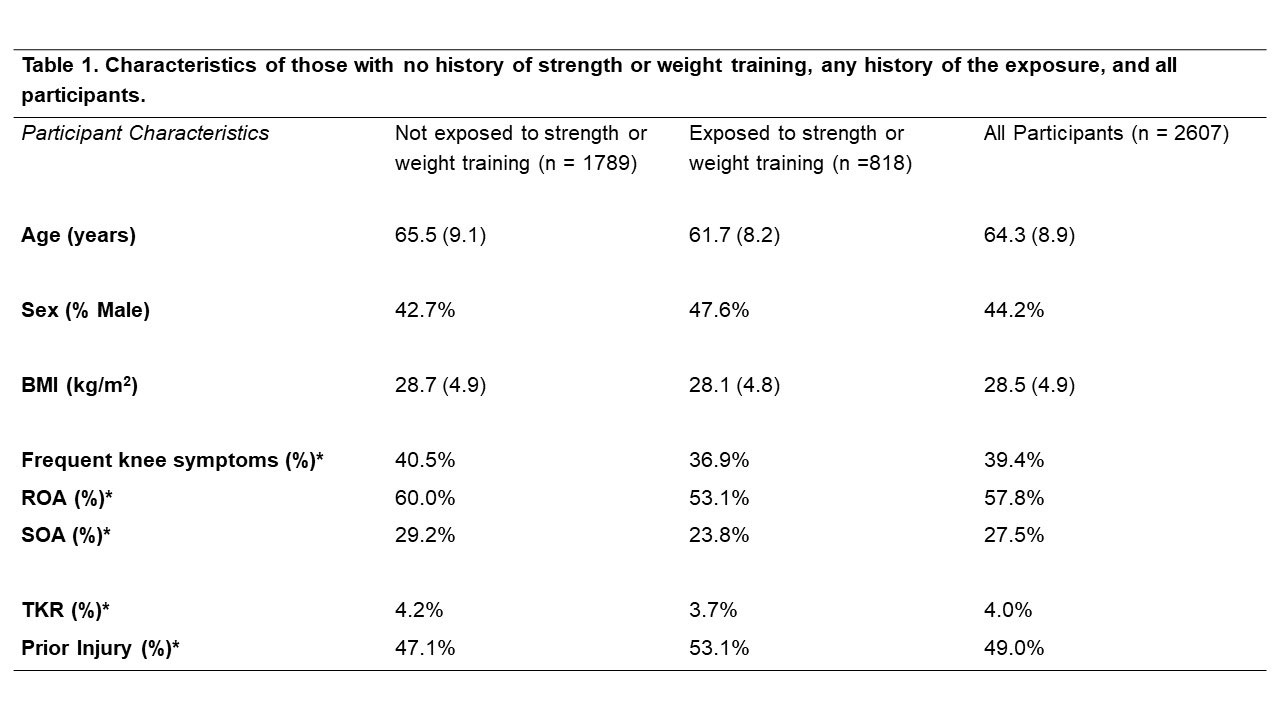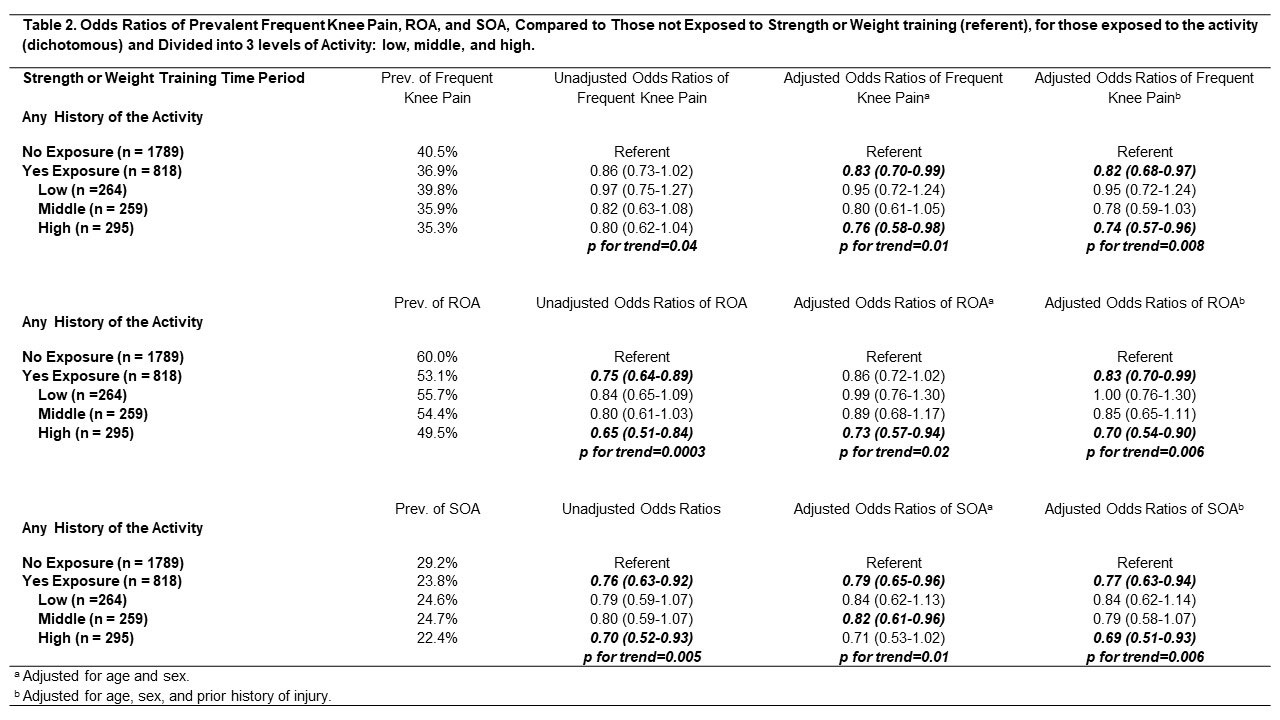Session Information
Session Type: Poster Session D
Session Time: 1:00PM-3:00PM
Background/Purpose: Engagement in strength training has become increasingly popular and is an activity that can involve weight-bearing, heavy lifting, and frequent knee bending; and thus may influence the natural history of knee OA. It has been shown in short term RCTs to be beneficial. However, no epidemiologic studies have evaluated the long term effect of strength training on knee pain or OA among non-elite competitors. Therefore, we aimed to evaluate the relationship of a history of this activity with symptomatic knee OA in the Osteoarthritis Initiative (OAI), a community-based cohort not recruited based on strength training status.
Methods: This is a retrospective cross-sectional study of OAI participants with knee x-ray readings, symptom assessments, and completed lifetime physical activity surveys where participants identified 3 most frequently performed physical activities (≥ 20 times in life) from a list of 37 for ages 12 – 18, 19 – 34, 35 – 49 and ≥50 years old. Those indicating strength or weight training as an activity were defined as being exposed to the activity in that time period. Any history of the activity included participation from any time period. The cumulative times the participants reported the activity were used to tertile the exposure. Posterior-Anterior semi-flexed knee radiographs were obtained at the 48-month visit and scored for Kellgren-Lawrence (KL) grade (0-4). Radiographic OA (ROA) was defined as KL ≥ 2. Frequent knee pain within a person required at least one knee with symptoms. Symptomatic radiographic OA (SOA) required at least one knee to have both ROA and frequent knee pain. Anyone with a total knee replacement was classified as having all outcomes.
We performed logistic regression analyses where the predictor was any history of strength or weight training and in the specific age ranges using dichotomous groups and groups based on tertiles of the activity. The outcomes were ROA, frequent knee pain, and SOA; adjusted analyses included covariates age and sex; and then any prior history of injury. Trends were tested using the Cochrane-Armitage test.
Results: 2607 participants were included. The fully adjusted odds ratios for frequent knee pain, ROA, and SOA, among those who participated in strength training any time in their lives were 0.82 (0.68-0.97), 0.83 (0.70-0.99), and 0.77 (0.63-0.94), respectively. Findings were similar when looking at the specific age ranges.
Conclusion: This is the first epidemiologic study to examine the impact of strength training on knee health in a community-based sample not selected for a history of elite weight lifting. We did not find an increased prevalence of symptoms or ROA in people with a history of this activity compared to those without. In fact, there was a decreased prevalence of all outcomes in those who participated in the activity, indicating that strength training may be beneficial towards knee health. Those in the highest exposure group might have a greater benefit. Adjustment for injury strengthened the associations. Further detailed and longitudinal evaluation of the effects of strength training on knee OA and symptoms is warranted.
To cite this abstract in AMA style:
Lo G, Richard M, McAlindon T, Kriska A, Rockette-Wagner B, Eaton C, Hochberg M, Jackson R, Kwoh K, Nevitt M, Driban J. Strength Training Associates with Less Knee Osteoarthritis: Data from the Osteoarthritis Initiative [abstract]. Arthritis Rheumatol. 2022; 74 (suppl 9). https://acrabstracts.org/abstract/strength-training-associates-with-less-knee-osteoarthritis-data-from-the-osteoarthritis-initiative/. Accessed .« Back to ACR Convergence 2022
ACR Meeting Abstracts - https://acrabstracts.org/abstract/strength-training-associates-with-less-knee-osteoarthritis-data-from-the-osteoarthritis-initiative/


